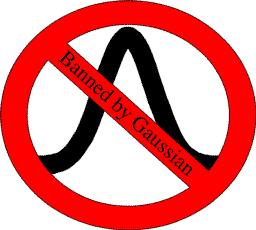Software
We write our own computer codes for a wide variety of quantum chemistry, many-body, and other numerical methods needed to conduct our research. As a result, we maintain a rich and constantly improving local software infrastructure, especially in areas of ab initio electronic structure and nuclear structure theories.
We are responsible for all coupled-cluster (CC), equation-of-motion CC (EOMCC), and local correlation cluster-in-molecule (CIM) options in the popular electronic structure package GΛMESS. This includes novel theories developed by our group as well as a wide range of conventional CC and EOMCC approaches. Among them are the triples as well as triples and quadruples corrections, in factorized and completely renormalized forms, to ground-state CCSD energies (e.g., CR-CC(2,3)); the completely renormalized triples corrections to total and vertical excitation energies obtained with EOMCCSD, such as δ-CR-EOMCC(2,3) and δ-CR-EOMCCSD(T); routines that perform iterative CC calculations with single, double, and triple excitations, treated fully, as in CCSDT, and with active orbitals, as in CCSDt, which can further be corrected using a powerful CC(P;Q)-based CC(t;3) approach; several approximate coupled-pair (ACP) options without and with noniterative as well as iterative (active-space and full) treatments of the connected triply excited clusters, designed to handle strongly correlated systems involving entanglement of larger numbers of electrons; the electron attachment (EA) and ionization potential (IP) EOMCC methods through 3p-2h/3h-2p terms, treated fully and with active orbitals; the double electron attachment (DEA) and double ionization potential (DIP) EOMCC methods through 4p-2h/4h-2p terms, again treated fully or with active orbitals; and several linear-scaling CIM-CC approaches, from CIM-CCSD through CIM-CCSD(T) to CIM-CR-CC(2,3), along with CIM-MP2, and their sublinear-scaling multi-level extensions allowing one to mix different methods within a single calculation (e.g., MP2 with CCSD(T), MP2 with CR-CC(2,3), or CCSD with CR-CC(2,3)). Thus, we provide researchers at universities and national laboratories as well as instructors and students using GAMESS in education with the new computational chemistry tools that have not been available to them before. Some of our CC, EOMCC, and CIM-CC methods are also available in NWChem and, in the original or modified form, in MRCC, Q-Chem, and ORCA. For more information about GAMESS and the wide range of options available in it, including our contributions until 2020, see, e.g., J. Chem. Phys. 152, 154102 (2020). For the information about selected recently developed high-performance quantum chemistry codes incorporated in GAMESS, including those based on our CC routines, that can take advantage of the most advanced multi-node, multi-core computer architectures, including CPUs as well as GPUs and other modern accelerators, see J. Chem. Theory Comput. 19, 7031-7055 (2023).
We also maintain the "Piecuch Research Group" open-source GitHub repository at https://github.com/piecuch-group, which includes our original, home-grown, and user-friendly CCT3, CCQ, CCpy, and Miniccpy software packages interfaced with GAMESS and other popular electronic structure codes, such as PSI4 and PySCF. The CCT3 code, which is a plugin to PSI4, can perform CC calculations with singly, doubly, and triply excited clusters, treated fully, as in CCSDT, or with active orbitals, as in CCSDt. It also allows one to correct the CCSDt energies for the connected triples outside the active set using the aforementioned noniterative CC(t;3) correction based on the CC(P;Q) formalism discovered in our group. By making the active orbital set, which is defined by the user, empty, the CCT3 code can also perform the CCSD and completely renormalized CR-CC(2,3) calculations. The companion CCQ code included in our GitHub repository is an extension of the CCT3 package to connected quadruples. Thus, in addition to the options available in CCT3, it enables CCSDTQ computations and calculations using the active-space CCSDtq and CCSDTq approaches. The newest and the richest CCpy package, implemented in Python and using the Numpy library and Fortran in the computationally critical parts, enables a wide range of CC [CCD, CCSD, CCSD(T), CR-CC(2,3), CCSD(T)(a)*, CC3, CCSDt, CCSDT, CR-CC(2,4), CC4, CCSDTQ]; ACP [ACCD, ACCSD, ACC(2,3), ACCSDt, ACC(t;3)]; EOMCC [EOMCCSD, SF-EOMCCSD, CR-EOMCC(2,3), δ-CR-EOMCC(2,3), SF-EOMCC(2,3), EOMCCSD(T)(a)*, EOM-CC3, EOMCCSDt, EOMCCSDT, IP-EOMCCSD(2h-1p), IP-EOMCCSD(T)(a)*, IP-EOMCCSD(3h-2p){No} (or IP-EOMCCSDt), IP-EOMCCSD(3h-2p), IP-EOMCCSDT, EA-EOMCCSD(2p-1h), EA-EOMCCSD(T)(a)*, EA-EOMCCSD(3p-2h){Nu} (or EA-EOMCCSDt), EA-EOMCCSD(3p-2h), EA-EOMCCSDT, DIP-EOMCCSD(3h-1p), DIP-EOMCCSD(4h-2p), DIP-EOMCCSD(T)(a)(4h-2p), DIP-EOMCCSDT(4h-2p), DEA-EOMCCSD(3p-1h), DEA-EOMCCSD(4p-2h)]; CC(P;Q) [CC(t;3) for ground and excited states, adaptive for ground and excited states, CIPSI-driven for ground states]; and externally corrected CC [ec-CC-II, ec-CC-II3, ec-CC-II3,4] computations. It also offers MP2 and MP3 options. CCpy uses interfaces to GAMESS and PySCF to obtain the mean-field (typically Hartree-Fock) reference state and the associated one- and two-electron integrals in the molecular orbital basis prior to performing correlated calculations. It can be directly obtained from our GitHub repository or as an offficial extension module of PySCF (see https://pyscf.org/install.html and scroll down to section "Install PySCF extensions"). In addition to CCT3, CCQ, and CCpy, our GitHub repository also includes Miniccpy, a smaller spin-orbital package written in Python and using Numpy, which we have added to our repository for pedagogical reasons and, to a certain extent, to facilitate relativistic and, potentially, nuclear structure computations using true single-particle states as the underlying bases. Miniccpy implements several CC and EOMCC approaches, including CCD, CCSD, CCSD(T), CR-CC(2,3), CC3, CCSD(T)(a)*, CCSDT, CCSDTQ, EOMCCSD, CR-EOMCC(2,3), EOM-CC3, EOMCCSD(T)(a)*, EOMCCSDT, IP-EOMCCSD(2h-1p), IP-EOMCCSD(T)(a)*, IP-EOMCCSD(3h-2p), EA-EOMCCSD(2p-1h), EA-EOMCCSD(T)(a)*, EA-EOMCCSD(3p-2h), DIP-EOMCCSD(3h-1p), DIP-EOMCCSD(4h-2p), DEA-EOMCCSD(3p-1h), and DEA-EOMCCSD(4p-2h), and uses PySCF under the hood to solve Hartree-Fock equations and generate the required transformed one- and two-body molecular orbital integrals.

